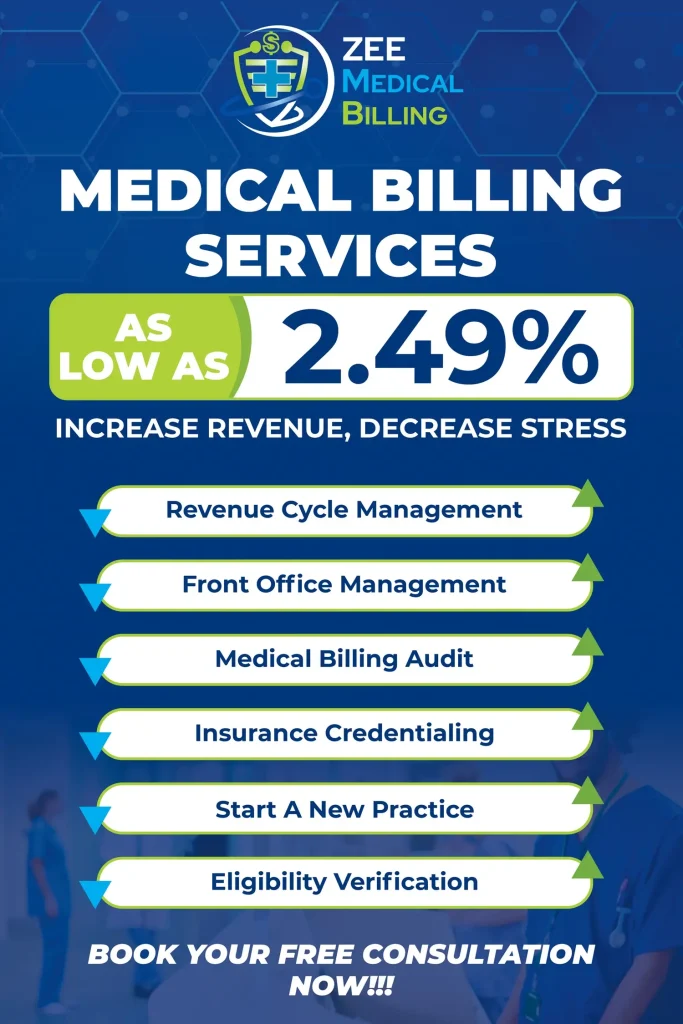Understanding Physical Therapy Billing Units
When it comes to physical therapy billing, accuracy and compliance are critical. Physical therapy billing units, often referred to as PT billing units or therapy units, form the foundation of how services are reported and reimbursed, particularly under Medicare and Medicaid.
In this guide, we’ll break down what billing units mean, how to calculate them using therapy minutes, how CMS guidelines affect billing, and how to avoid common errors.
What Are Physical Therapy Billing Units?
A billing unit in physical therapy is a time segment for services given during a patient’s session. Most insurers, including Medicare, use the 8-minute rule. This rule helps decide how many units to bill based on how long the service lasts.
Also Read: How to Grow and Value Your Physical Therapy Practice?
Key Terminology:
- Medicare Units: Standardized time blocks used by CMS for billing.
- Therapy Units: Synonymous with billing units; refer to the number of reimbursable service units.
- PT Billing Units: Units specific to physical therapy sessions.
The 8-Minute Rule: How It Works
The 8-minute rule is the gold standard for determining billing units in timed services. According to CMS guidelines for billing physical therapy, services must last at least 8 minutes. You need this to count as one unit of care.
Minutes to Units Breakdown
| Therapy Minutes | Billing Units |
| 8 – 22 minutes | 1 Unit |
| 23 – 37 minutes | 2 Units |
| 38 – 52 minutes | 3 Units |
| 53 – 67 minutes | 4 Units |
| 68 – 82 minutes | 5 Units |
| 83 – 97 minutes | 6 Units |
Example: If a physical therapist spends 42 minutes with a patient providing timed services, that qualifies for 3 billing units.
Timed vs Untimed Codes
Understanding the difference between timed and untimed therapy codes is essential for accurate billing.
Comparison Table: Timed vs Untimed Codes
| Aspect | Timed Codes | Untimed Codes |
| Based on Minutes | Yes | No |
| Affects Billing Units | Yes (8-minute rule) | No (billed once per session) |
| Examples | Therapeutic Exercise, Manual Therapy | Evaluation, Hot/Cold Pack |
Note: Untimed codes always bill as 1 unit per service, regardless of how long the treatment takes.
Medicare and Medicaid Guidelines
Both Medicare and Medicaid billing units rely heavily on proper unit calculations. Medicare follows the 8-minute rule closely. Medicaid rules can differ by state, but they usually match CMS practices.
Medicare Billing Physical Therapy:
- Follow the 8-minute rule.
- Only direct, face-to-face time counts.
- Document the time for each service separately.
Medicaid Billing Units:
- Similar to Medicare, but check state-specific rules.
- Some states may allow rounding or slight overlaps.
CMS Physical Therapy Billing Guidelines
The Centers for Medicare & Medicaid Services (CMS) provides detailed rules for billing units for physical therapy:
- Count only skilled intervention minutes.
- Group services cannot be double-counted.
- You must document each timed code separately.
Important Notes:
- Supervision without direct treatment time cannot be billed.
- CMS only allows rounding per its total time thresholds.
Best Practices to Avoid Common Billing Mistakes
Incorrect unit billing can lead to claim denials, audits, or payment delays. Here’s how to stay compliant:
Do:
- Use therapy minutes to determine correct units.
- Understand the difference between timed/untimed codes.
- Verify with payers for state-specific rules.
- Document clearly per code and service.
Also Read: Expert Tips to Improve Physical Therapy Billing Success
Don’t:
- Round minutes incorrectly.
- Count time spent setting up or supervising.
- Bill group therapy as individual sessions.
Real-World Examples
Example 1: Mixed Timed Services
- Therapeutic Exercise – 20 mins
- Manual Therapy – 15 mins
- Total: 35 mins →2 billing units
Example 2: Timed + Untimed
- Evaluation (untimed) – 1 unit
- Therapeutic Activity – 25 mins → 2 units
- Total Billing: 3 units
FAQs
What is a billing unit in physical therapy?
A billing unit is the standard time measurement used to report physical therapy services for insurance reimbursement. Each unit typically represents 15 minutes of direct, face-to-face service time. This structure ensures that therapists receive accurate payment in proportion to the care they provide.
How many minutes equal one PT billing unit?
Under Medicare’s 8-minute rule, providers bill one unit for 8 to 22 minutes of a single CPT code. If therapy time extends, we add additional units incrementally based on time brackets to ensure proportional billing.
Can I combine minutes from different services for unit calculation?
Yes, if providers bill all services under timed codes, they can combine their durations. Documenting each service separately is important. Make sure the total time meets the requirement for multiple billing units.
Are untimed services billed differently?
Providers bill untimed services as a single unit per session, regardless of time spent. For example, providers bill initial evaluations and the use of hot or cold packs as one unit. This is true even if they take more or less time than 15 minutes.
What happens if I bill the wrong number of units?
Billing incorrectly—whether over or under—can result in denied claims, payment delays, or audits. Following CMS guidelines and using therapy minutes accurately to match billed units is essential to avoid compliance issues.
Final Thoughts
Accurate calculation of physical therapy billing units ensures proper reimbursement and compliance with regulations. Understanding timed and untimed codes is important.
This knowledge is useful for Medicare billing, physical therapy units, and state Medicaid rules. You should also understand the 8-minute rule and how to document services. These skills are essential for success. By following these guidelines, physical therapists can avoid expensive mistakes. This helps them keep billing clear and efficient.
Need Expert Medical Billing Services?
Zee Medical Billing provides professional billing solutions tailored to healthcare providers across the United States. In addition to offering top-tier support from our main office, we proudly serve clients in Illinois, Indiana, California, Kentucky, New York, Washington, Georgia, Alabama, South Carolina, Texas, Pennsylvania, Ohio, New Hampshire, Nevada, Massachusetts, Hawaii, Arizona, and Colorado! Whether you’re looking to streamline your revenue cycle or improve claims accuracy, you can reach out to us to learn more about how we can support your practice.









